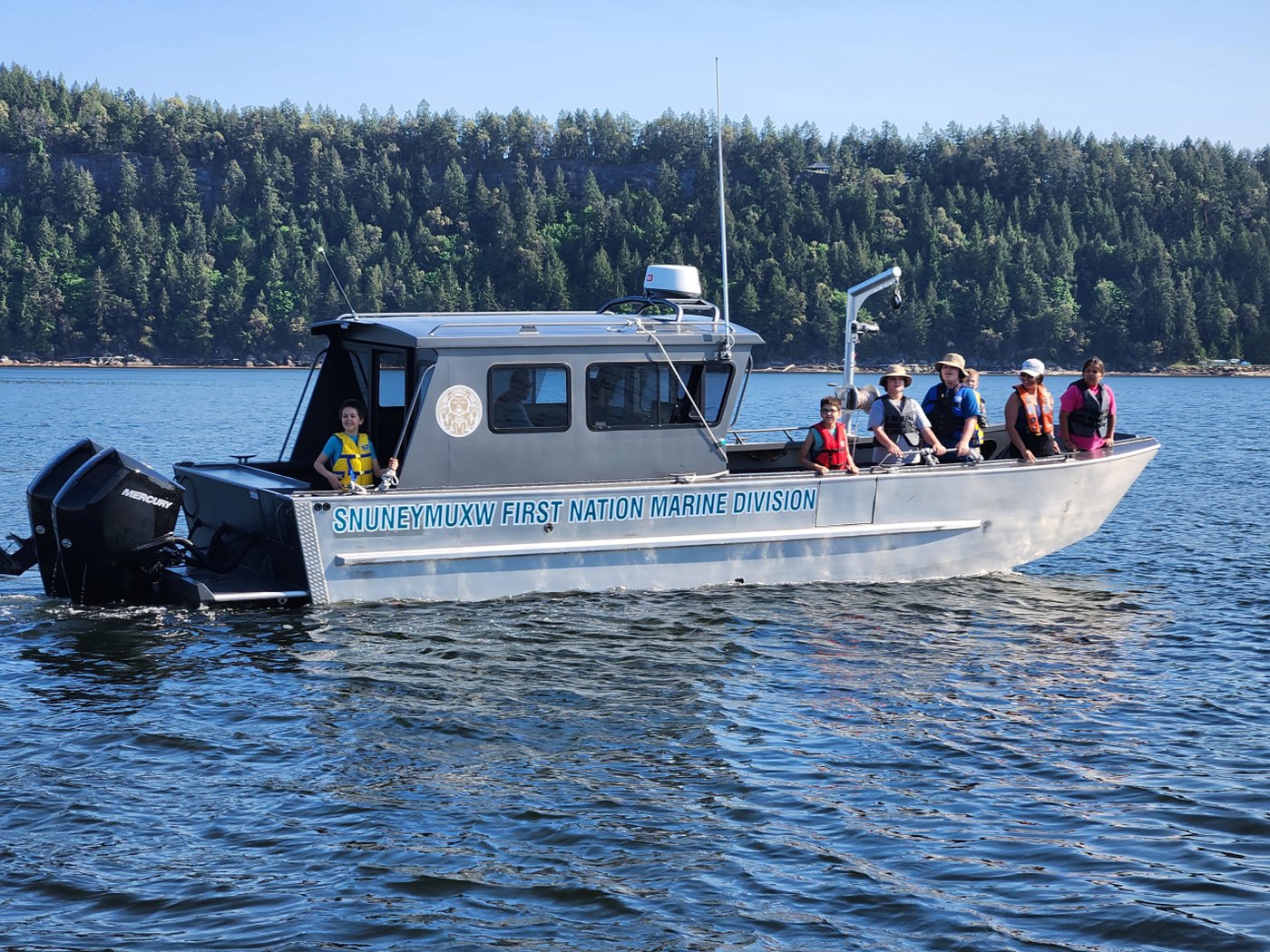The story behind the IndigiNews brand
Q&A with reporter and designer Kelsie Kilawna

When the teams at The Discourse and Aboriginal Peoples Television Network (APTN) were imagining a new platform for Indigenous news, we knew we wanted it to be bold, creative and engaging. We’re building IndigiNews to be a place where people’s stories are heard, understood and respected — and from our name to our logo to the colours on our website, we wanted people to feel that.
What we didn’t know at the time was that the person who would make that happen would also be one of our new reporters.
Kelsie Kilawna is a photographer, storyteller, designer and now an IndigiNews reporter. Kelsie is a Sqilxw (Syilx/Indigenous) woman who was born and raised in Inkumupulux (the head of Okanagan Lake), near Vernon, B.C. While the team collectively decided on the name IndigiNews — which somewhat obviously is a play on Indigenous digital news — Kelsie is behind the visual design and also most of the photos that you see on our website.
As Kelsie sent in her ideas for what the site and brand could look like, each element had meaning and purpose. Now that it’s all finalized, I asked her about the story behind the designs so that I could share this with you.
Lindsay: When you were first tasked with developing the IndigiNews brand, what went through your mind?
Kelsie: I really wanted it to be bright, because when you look historically about how we were represented through the media, it was always black and white with sometimes red or medicine-wheel colours. I wanted to use the colours of the land because that’s where all of our connections draw back to. For me colour brings life, and I wanted to bring that life into this work.
L: Tell me more about the colours that you chose, and why?
K: I chose colours that we harvest here in the Okanagan. The red and yellow are from the ochre. Those are both harvested in different areas throughout our nation. The vibrant turquoise is in there because our waters here are that beautiful colour. And the dark midnight blue is to symbolize night time. That’s an important time for us because that is often when we tell stories.

L: There’s a lot of symbolism in the design; tell me more about that.
K: The circle is the holistic, all-around connection that’s going to be created through IndigiNews. There’s the four dots for our four different medicines. The medicines vary in the many different First Nations, Inuit and Métis territories, so I wanted to keep it simple with the four dots as symbolism more than anything. The seven dots reflect our responsibility to our past and future generations. This is more of a teaching from out East, but I think it resonates with a lot of Indigenous communities. It’s important to have reciprocal relationships with all things and it’s your responsibility to always be thinking seven generations ahead of yourself.
L: The last element in the logo is the xusem (soapberry or buffalo berry). Why did you want to include that?
K: The reason I used that is because it’s a really strong medicine for the body. But also we use that to make “Indian ice cream,” which is all about bringing joy, especially to the young ones. Xusem – it’s like gold for us. People will harvest it and give it out throughout the year as medicine. The actual design of the xusem was created by Mangeshig Pawis-Steckley. He’s a talented Ojibwe Woodland artist living in Vancouver, B.C. Mangeshig did an incredible job of bringing all of the colour together and I feel like his design ties it all in and makes it whole.
L: What do you hope people feel when they see IndigiNews for the first time?
For me when I see it, it brings me joy; I hope people feel that. And because the colours relate back to the land, when I look at it I think about how this is something that’s truthful, something we can rely on. I hope when people see it for the first time that it resonates with them, and that it’s something that they remember.
K: You’re behind all of the visual elements of IndigiNews, which we’re all so excited to share. What does that mean to you?
That to me is the most mind-blowing thing. It’s just an honour that I got to be part of it and that I get to see how it’s going to grow and change. There’s not much to say except that it’s been a complete honour.
Kelsie Kilawna is covering Indigenous news in the Okanagan. You can follow her on Twitter or read all of her stories soon here.
Author
Latest Stories
-
‘Bring her home’: How Buffalo Woman was identified as Ashlee Shingoose
The Anishininew mother as been missing since 2022 — now, her family is one step closer to bringing her home as the Province of Manitoba vows to search for her
-
Nuu-cha-nulth, settler artists depict history of Yuquot with bentwood box camera
Carver Sanford Williams (Ahtsik-sta Qwayachiik) and photographer Ron Smid spent seven years completing the collaborative piece
-
With local orcas ‘in desperate condition,’ Snuneywuxw is monitoring ships’ noises
First Nation collecting sound data, hoping to protect at-risk southern resident killer whales from ‘acoustic smog’ of increased maritime traffic













